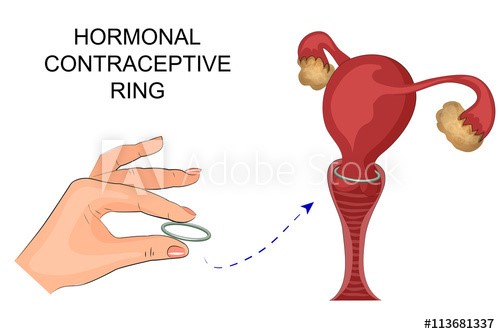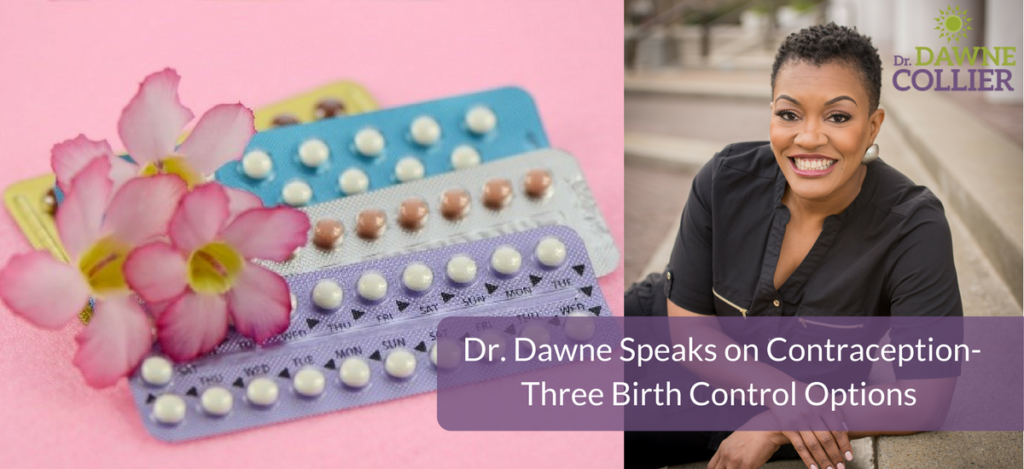Hi! It’s Dr. Dawne, Chicago’s own board-certified OBGYN. My mission is to help women of all ages optimize their health, so they can reach their personal next best.
Let’s talk contraception – birth control options. Today we will discuss the oral contraceptive pill (OCP), which most of us are familiar with, the vaginal ring, and the contraceptive patch. While the IUD is still my favorite, these are a close second. With these medications, essentially, you have estrogen and progesterone – hormones naturally found in your body, that are given in high levels, to suppress ovulation. If you don’t ovulate, you don’t release an egg to be fertilized, so you shouldn’t be able to get pregnant.
The efficacy of the Oral Contraceptive Pills, Vaginal Ring and Contraceptive Patch, (how well they keep you from getting pregnant), is ninety-one to ninety-nine percent, which is pretty good!

With the OCP, you take one pill every day. The last or fourth week of pills are what we call placebo pills or sugar pills. They don’t have any active medicine in them, but you still take a pill daily to keep you remembering to take a pill. The cool thing about the OCP, is the extended-cycle option. There are OCP formulations available that maintain the active pill for eleven weeks, with the placebo pills on the twelfth. This gives you the option of limiting your menstrual cycle to four times per year.

With the vaginal ring, you place it in the vaginal (as far up as it will go), and you leave it in place for three weeks at a time. Some women are a bit squeamish about placement, but you’ll get used to it, (it’s YOUR vagina after all). You take the vaginal ring out the beginning of week four, and put a new one back in place at the end of the fourth week.

With the patch, you place it on your skin (arm, abdomen, or buttocks), leaving it in place one week at a time. You’re going to switch the patch placement each week, and the fourth week you’re not going to wear the patch at all.
Side effects of the birth control pills/vaginal ring/ contraceptive patch that some ladies will notice are nausea, breast tenderness, and mild abdominal bloating. Bloating does not mean ten pounds. Bloating means a pound or two, okay? So, if you’re gaining more than a few pounds, it’s probably not because of the pill. Now some women will also notice that their sex drive decreases on these medications; that’s another symptom you want to pay attention to. You can also get spotting if you miss a pill, however this is less common with the vaginal ring. If you get any of these side effects, let your doctor know. Often switching the OCP will alleviate these symptoms; if not, there are other contraceptive options we can try.
eNow the OCP, vaginal ring and the contraceptive patch, they also shorten your menstrual cycle. If you have a menstrual cycle lasting seven days it should be about three or four days on these types of contraception. Your menstrual cycle should be less heavy as well. Ladies that have heavy menstrual cycles that don’t use the IUD, can use these contraception options for relief as well.
So, while the IUD is my favorite form of contraception, the Oral Contraceptive Pills, Vaginal Ring and Contraceptive Patch are a close second, due to their relative ease of use, and ability to tailor to one’s own lifestyle. If you haven’t already, talk to your doctor about these great forms of contraception, to see if they are an option for you.
If you’ve found this information to valuable, please visit my website, DrDawneObGyn.com, for more fun info, and where you can download my free audiobook “Conversations on Contraception”. You can also follow me @ DrDawneObGyn on Twitter, Facebook, Instagram, YouTube, LinkedIn, and Pinterest!



